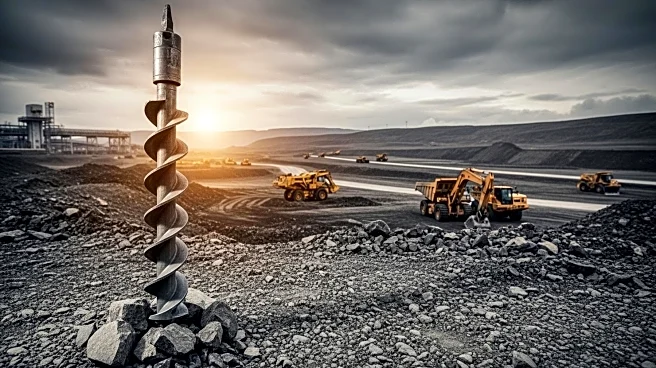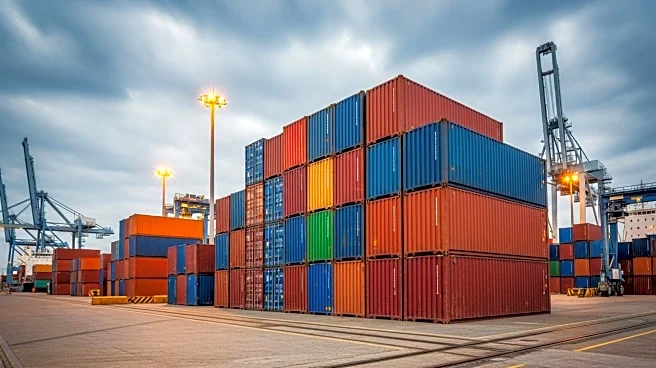What's Happening?
The mining industry is undergoing significant changes as it navigates the challenges posed by the global electrification revolution, geopolitical tensions, and evolving financial landscapes. According to industry sources, five key forces are reshaping the sector: a shift in battery metal demand, an impending copper shortage, policy-driven supply chain restructuring, a reset in mining finance, and a pivot towards climate-linked disclosures. These factors are influencing the global resources landscape, with a focus on quality over quantity in growth strategies. The U.S. is playing a crucial role, with increased investor interest in companies with U.S.-based assets, particularly in critical minerals like antimony, gallium, and rare earths. This trend is driven by geopolitical risks and the need for diversified supply chains.
Why It's Important?
The developments in the mining industry have significant implications for U.S. economic and strategic interests. As the demand for critical minerals grows, the U.S. is positioning itself as a key player in securing these resources, which are essential for technologies like electric vehicles and renewable energy systems. The focus on U.S.-centric assets reflects a broader trend of reducing reliance on foreign supply chains, particularly those dominated by China. This shift could lead to increased domestic investment and job creation in the mining sector. Additionally, the emphasis on climate-linked disclosures and sustainable practices aligns with global decarbonization efforts, potentially enhancing the industry's long-term viability and appeal to environmentally conscious investors.
What's Next?
The mining industry is expected to see continued investment in U.S.-based projects, particularly in critical minerals. Companies are likely to pursue strategic partnerships and joint ventures to secure supply chains and meet growing demand. Policy changes, such as the U.S. Inflation Reduction Act, will further incentivize domestic production and processing of critical minerals. As geopolitical tensions persist, the industry may also witness increased collaboration between Western countries to build resilient supply chains. The focus on sustainability and climate-linked disclosures will likely drive innovation and adoption of environmentally friendly mining practices.
Beyond the Headlines
The shift towards U.S.-centric mining assets highlights broader geopolitical and economic trends, including resource nationalism and the strategic importance of critical minerals. This focus on domestic resources could lead to a reevaluation of trade policies and international relations, particularly with countries that dominate the supply of these materials. The industry's move towards sustainable practices also reflects a growing recognition of the environmental impact of mining and the need for responsible resource management. These changes could have long-term implications for global supply chains, energy security, and the transition to a low-carbon economy.












